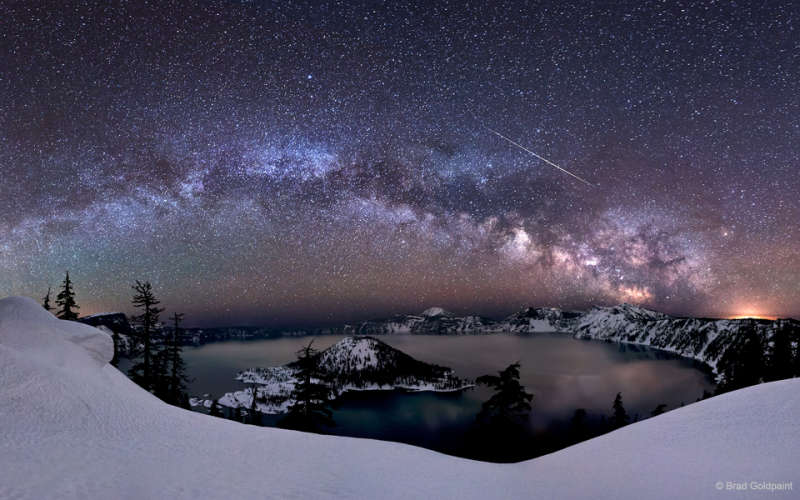
|
Credit & Copyright: Brad Goldpaint
(Goldpaint Photography)
Explanation:
Did you see it?
One of the more common questions during a
meteor
shower occurs because the time it takes for a meteor to flash is typically less
than the time it takes for a head to turn.
Possibly, though, the glory of seeing
bright meteors shoot across and
knowing that
they were once small granules on another world might make it all worthwhile,
even if your
observing partner(s) could not share in every particular experience.
Peaking late tonight, a dark sky should enable the
Lyrids meteor shower
to exhibit as many as 20 visible
meteors per hour from some locations.
In the
featured composite of nine exposures taken during the 2012 shower, a
bright Lyrid meteor streaks above picturesque
Crater Lake in
Oregon,
USA.
Snow covers the
foreground,
while the majestic central band of our home
galaxy arches well behind the serene lake.
Other meteor showers this year -- and every year -- include the
Perseids in mid-August and the
Leonids in mid-November.
|
January February March April May June July August September October November December |
| |||||||||||||||||||||||||||||||||||||||||||||||||||||||
NASA Web Site Statements, Warnings, and Disclaimers
NASA Official: Jay Norris. Specific rights apply.
A service of: LHEA at NASA / GSFC
& Michigan Tech. U.
Based on Astronomy Picture
Of the Day
Publications with keywords: meteor
Publications with words: meteor
See also:
- APOD: 2025 August 25 Á The Meteor and the Star Cluster
- APOD: 2025 August 6 Á Meteor before Galaxy
- APOD: 2024 November 27 Á The Meteor and the Comet
- Meteor over the Bay of Naples
- Fireball over Iceland
- APOD: 2023 August 23 Á The Meteor and the Galaxy
- APOD: 2023 July 16 Á Meteor and Milky Way over the Alps
